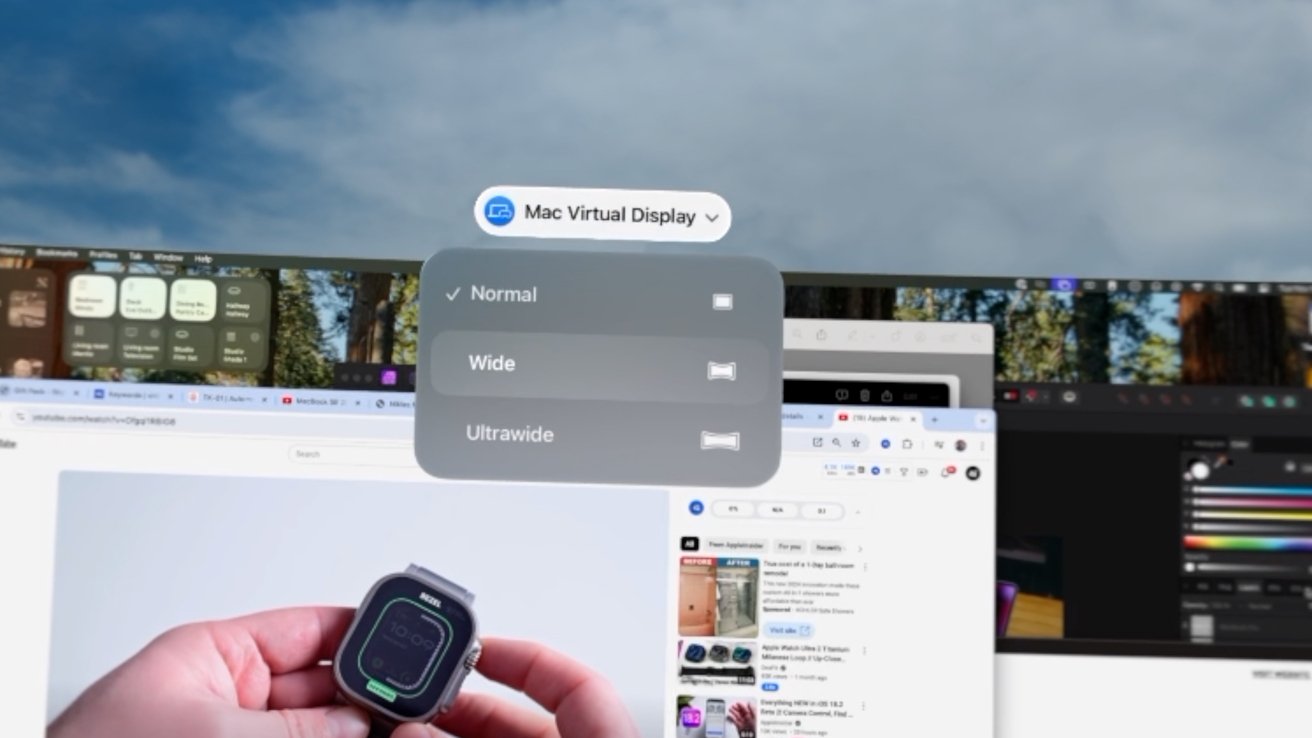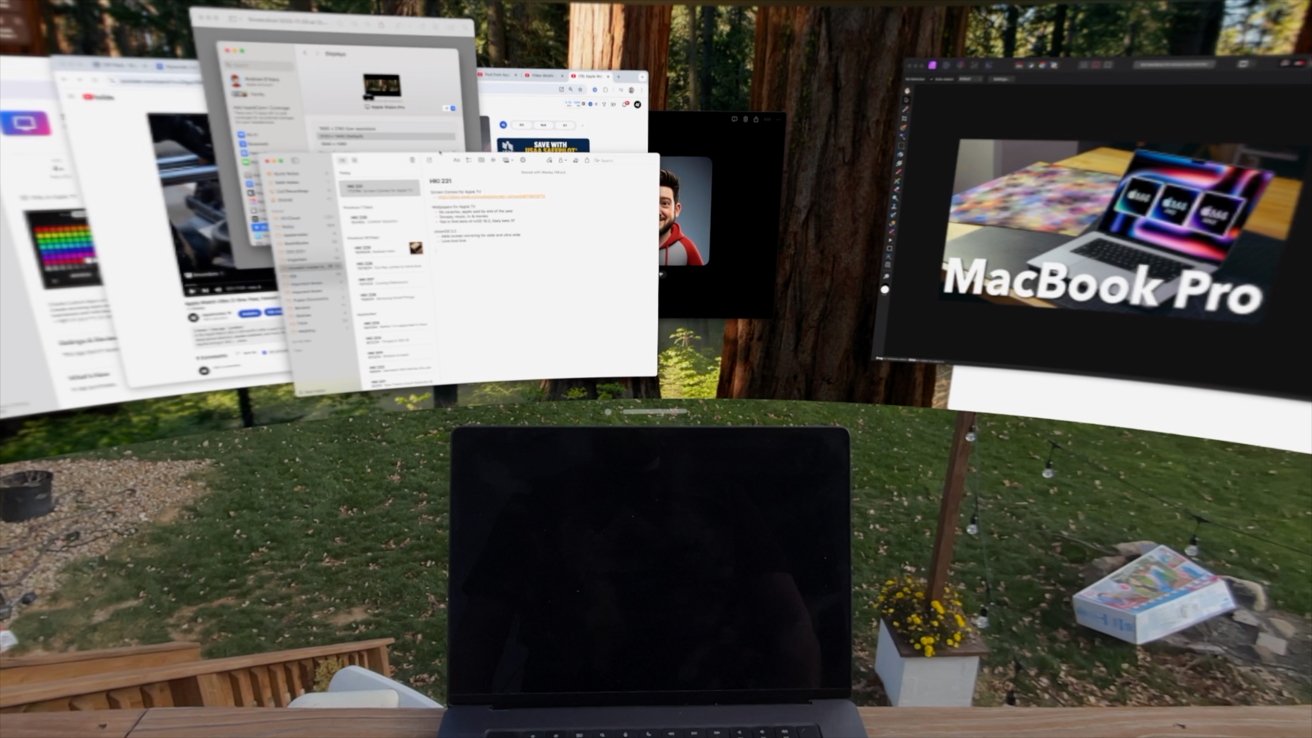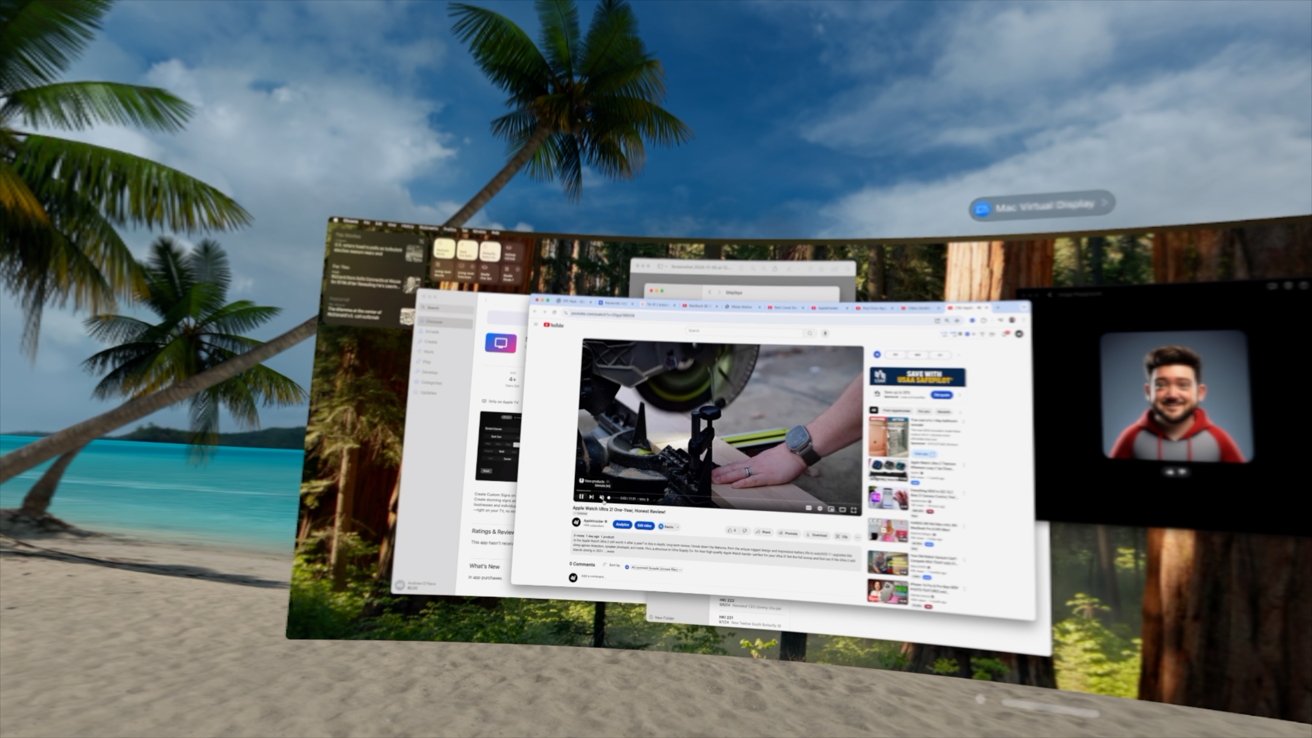Testing out Mac ultra wide display mirror on Apple Vision Pro
You can finally mirror your Mac to Apple Vision Pro with new wide and ultra wide options. We updated to the latest beta so we could test it out.

You can soon mirror your Mac as an ultra wide display to Vision Pro
The new mirroring options arrive as part of visionOS 2.2, which just recently launched as an early developer beta. We updated our Apple Vision Pro -- and our MacBook Pro to macOS 15.2 -- to try it.

The visionOS 2.2 update is coming by year's end
This update isn't available to the public yet, but a full release is expected to coincide with Apple's other upcoming releases slated for early December.
How to use the ultra wide display on Apple Vision Pro
You start mirroring your Mac same as you did before. Put Vision Pro on and look at your Mac's display.
A small "Connect" button should appear, anchored in place. Select it and your Mac's display will go black as the mirrored display appears.

There are three aspect ratios with this update
What differs now though, is that there is a new drop down centered above the mirrored display. When you select it, it gives you the choices of normal, wide, and ultra wide.

Comparing the three sizes of a mirrored display
Wide and ultra wide are both new and give you vastly more screen real estate to work with.
The normal-sized display has always been incredibly cramped and the new options were essential to being productive with Vision Pro.

Use your Mac outside with Vision Pro
The display is of course resizable and you can adjust it by dragging the lower-right corner. By grabbing the bar in the middle, you can move it anywhere in space, including up and down, forward and back.
As you move it away from you, the display straightens out but when it's close to you, it starts to curve. The curve is awesome and mimics that of a dedicated ultra wide display like the popular Odyssey G9.

The ultra wide screen looks fantastic
When virtually placed roughly at desktop level, you do have to turn your head a bit to look at the sides of the display, but not in a bad way. At times, it felt as though the ultra wide options was too wide.
Putting our Final Cut Pro timeline on the ultra wide had too much space. That's especially true if you are using full screen apps.

Apps can jump to the four corners
There is one helpful change in macOS Sequoia that provides a little aid. You can snap apps into different spots, like four corners or split screen.
Apple says that using the ultra wide is equivalent to two 4K monitors side by side. Check system preferences, it has a resolution of 5120 by 1440, which is typical for ultra wide displays.
Lastly, now that we've been using this more, we started to appreciate the masking of keyboards. If you use Apple's Magic Keyboard, it will show through whatever environment you're in.

The keyboard is visible, even though we're on the beach
This makes it possible to see the keys while you type, even when you're immersed in any of the many environments.
Other improvements with visionOS 2.2
The new ultra wide and wide options aren't the only changes to mirroring with visionOS 2.2. Mirrored screens look much crisper, making text easier to read.
Maybe it's just us, but it also comes across as even more responsive as well. Improved responsiveness makes gaming with this amazing.
Any Mac game you can now mirror and play with a wireless controller on a massive, ultra-wide, IMAX-sized screen on the surface of the moon.

Apple Vision Pro is only getting better
Plus, audio no longer routes through your Mac's speakers. It instead comes through your Vision Pro speakers which is easier to hear.
We'll have to wait and see if any other features are added by the time it's released.
Read on AppleInsider


Comments
Or is it wrap-around?
As this is in beta, not yet everything is fully in place. The background environments, when enabled, become fully opaque; so you can't see your physical keyboard as you are typing. So for now, I allow the pass-through.
For the future, I do hope that Apple will further integrate the AVP interface with the virtual desktop. I found myself wanting to interact with the virtual Mac desktop and apps as if they were running from the AVP using hand gestures instead rather than being limited to mouse and trackpad. It would be very compelling and intuitive to have a user experience where the desktop and Vision Pro seamlessly functions as a unified environment.
In any case, when traveling with the MBP I would be hard pressed not to take the AVP.
I even imagine a mode where each macOS window is a window in the VisionOS space !